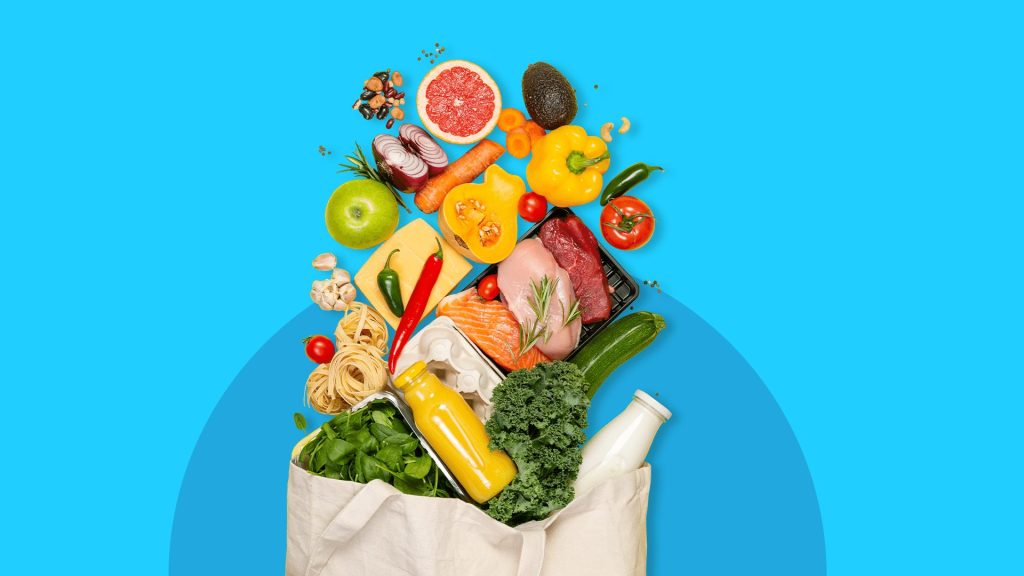
why whole foods are important?
First let’s talk about what a whole food is.
A whole food is simply a food that is not processed. The more steps you remove from preparing a food before it’s consumed, contributes to how fast your body will breakdown the food.
PROCESSING EXPLAINED
As an example, eat an orange. Sugar is present in the orange but so is the fiber, both, soluble and insoluble. Having both fiber components intact slows the metabolization of the sugar in the blood stream when eaten whole like this. Now take 3 oranges and puree them into an orange juice smoothie. Is this still healthy? Sure it isn’t the worst thing in the world but ask yourself…would you eat 3 whole oranges in one sitting? Most people wouldn’t. The sugar present in 3 pureed oranges now has the ability to raise your blood sugar to a higher level in one sitting. Also, one of the fiber components (insoluble fiber) is now shredded and no long as useful. This is simply because it has been broken down, refined, and essentially taken away your bodies need to do to anything with it. It has already been “digested” by your blender so to speak.
THERMAL PROCESSING
Your whole foods can be degraded in many ways via processing. Processing through heat is widely used because it’s an unsophisticated way to destroy microbial activity within the food. Pasteurization and cooking indeed make food safer to consume. However, there are certain foods that are pasteurized or cooked at such a high temperature that any nutrients beneficial to you are lost forever.
Cocoa vs. Cacao powder provides a great explanation of this. Both start off as beans from the cacao plant. Once harvested the beans are fermented and develop into the chocolate substance we know and love. The next step determine whether the final product will be cacao or cocoa. That is whether or not it is roasted. Cacao powder maintains the nutrient compounds from fermentation called flavanols which are antioxidant rich and anti-inflammatory properties that maintain heart health. It provides a good source of iron, fiber, and magnesium. However, if roasted, it becomes ‘cocoa powder’ and it loses all of these benefits.
CHEMICAL PROCESSING
These are known as ultra-processed foods and make up roughly 70% of grocery items in your local grocery store.
-Baked Goods
-Breads
-Cereals
-Candy
-Ice Cream
-Potato Chips
-Processed Meats (Sausage, Hot Dogs, Fish Sticks, etc)
-Sodapop
These foods certainly are tasty. Beyond that, they provide little to no nutrition and are very harmful to your body.
Read your label. Not just the part of the label that lists the amount of calories and sugars. The other part, the ingredients. At what point did you stop recognizing a word that you’ve heard before or can pronounce? These are the chemicals that have been infused into these foods. Through consumption it is only inevitable that these chemicals will be infused by your body with disastrous results over time.
‘INSTANT’ FOOD TYPES
With a microwave nearby and maybe a touch of water, these instant foods can be made and eaten well…instantly! Well one could argue, yeah, you could eat an apple instantly too. They’d be correct and that would be a fantastic health choice. That isn’t a behavior being displayed by the general population.
Comparing an Apple to Apple Jacks, it is clear which one is going to give you a higher bliss point. The sensory science that knows the point of taste where you like food the most. The sweetness, the crunch, the sweetening of the milk over time…you’re getting tempted already. With out a doubt you knew that description was that of the Apple Jacks breakfast cereal and not a regular apple.
These instant foods drive your bodies glycemic response and aid in food born illnesses like diabetes. In moderation this can be controlled. Western society tends to eat these types of foods for breakfast, lunch, and dinner. Even as snacks in-between. It is important to balance your food intake on the spectrum of taste to nutrition. Tilt the balance in the favor of nutrition.
HOW TO FIND WHOLE AND MINIMALLY PROCESSED FOODS?
You can call it the grocery store perimeter. Produce, meat and dairy. This is a good starting point to finding whole foods without making too many mistakes in your selection.
It goes deeper than this though. There are still unhealthy options present in those sections just as there are healthy options down the aisles. They key is learning to read the label and having rules on what you will allow yourself to purchase and consume.
One ingredient. A true whole food. This tends to be a very important item in the meal you are planning. It’s simple and easy.
Five ingredients or less. Items like Pico de Gallo, grass fed butter, and grass fed yogurts are all minimally processed with very few ingredients and highly nutritious.
Lots of ingredients but they’re all decent to excellent quality. This technicality is when you are an expert at reading a list of ingredients and have done your research. A fun example would be something like:
Rebel Ice Cream, Butter Pecan flavor.
Ingredients: Cream, Water, Roasted Pecans (Pecans, Butter, Coconut Oil, Salt), Erythritol, Vegetable Glycerin, Egg Yolks, Chicory Root Fiber, Milk Protein Isolate, Natural Vanilla Flavor, Salt, Peruvian Carob Gum, Guar Gum, Monk Fruit.
Contains: milk, egg, pecan
For such a savory and tasty product, this is a list of ingredients we can get behind.
You now know what to put in your body without much regret.

Leave a Reply
You must be logged in to post a comment.